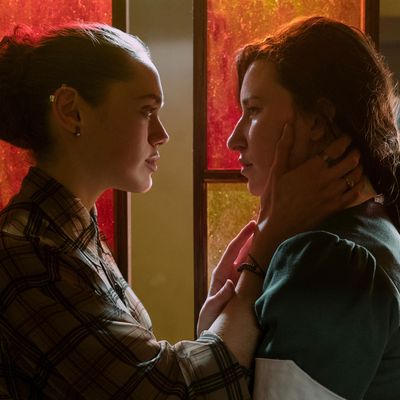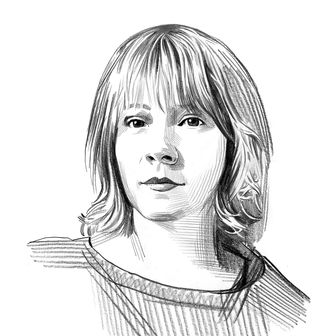
Chuck Klosterman said that pessimists never think they’re pessimists. Rather, they believe they are the only realists. It’s a common problem in media, especially in regard to anything that was born in comics: Realistic always means darker, edgier, more pessimistic about the human condition. Partially, this is because comics as a genre was incubated under a strict code of censorship. But it’s also because this is a classic stage of rebellion, one that some people never grow out of, and one that will always pay off financially. So the refrain becomes even more common: Optimists are brain-dead sheeple, and pessimists are the only ones who can see the truth.
But truth is a mysterious fish. It’s not so predictable as sad=true, happy=lie. John Dee wants to transform the world by stripping away its pleasantries, which he equates with lying. But pleasantries are as true as insults. Any picture of humanity that is unilaterally cruel ignores as much about human nature as any Silver Age Superman story. (Looking at you, The Killing Joke.)
John chooses a 24-hour diner as the site to launch his new world. It’s a lucky spot, as the diner happens to be occupied by several archetypal characters that day. There’s the moony waitress–aspiring author Bette, the gruff line cook Marsh, power couple Kate and Garry, jilted and jaded lesbian Lucy, and aspiring businessboy Mark. Everyone is sad in their own way — and horny and angry. Now, I’m writing this recap at my regular spot, and I harbor no secret anger or lust toward anyone here. Just sayin’.
John uses the ruby to peel back the niceties from these people. Marsh is gay, Garry is bi, and Bette is homophobic (and kinda gay). When Garry reveals that he’d be into some MLM stuff and the lighting turns bisexual, I fully cackled. We also learn that Kate and Garry can’t reconcile her status as CEO of both a pharmaceutical company and the relationship. He cheats to regain a modicum of power, and she disparages his worth ethic and cocksmanship. It’s a tale as old as time.
Judy hit her girlfriend, Donna, during their fight, and her anxiety about being left by her is half actual desire to stay together and half a worry that this is a referendum on her as a person. Before things start to get freaky at the diner, she FaceTimes with their mutual friend Rose. Let’s take a minute to memorize Rose’s face and hair. No reason! Just remember her.
Under the ruby’s spell, the diner devolves into a suck-and-fuck fest, then an orgy of violence. Apparently honesty, like grief, has stages. The three stages of honesty are (1) Who’s Afraid of Virginia Woolf?–style sniping, (2) horniness, and (3) self-mutilation. From the diner’s TV, we learn that people all over the world are going through the same stages, leaving mass destruction in their wake.
I’m sorry, but how tight-butthole’d do you have to be to believe that when you allow people to say what they really think, one of the first things they’ll say is “Damn, I wish I could crucify myself on a diner counter.” This is the product of a deeply repressed mind. If the NGL links that have spammed social media in the past few weeks tell us anything, it’s that many people are surprisingly chill when you let them say whatever they want with no threat of repercussions. John is clearly pushing the agenda, much like the architects of the Purge in The First Purge. When people are first given the right to Purge, they just party. It’s only after bad actors intervene that everything becomes a camp expression of American aggression.
Even Dream agrees with me. After John’s playthings at the diner have all killed themselves, Dream explains that the so-called illusions John took from the people at the diner defined them as much as their un-acted-upon urges. The Sandman argues that humanity is a story we tell ourselves, but that doesn’t mean it isn’t a true story. Or at least it’s one based on actual events.
John decides to kill Dream and become the new master of nightmares, because of course he does. He sees Dream as the root of his unhappiness, both as the guy who invented lying and as the guy who inadvertently corrupted the relationship between him and his mother. And there’s a soupçon of Dream serving as a substitute for the dad he never met. It’s all very Oedipal, especially once John enters the Dreaming and fights through one motherfucker of a nightmare.
Having fought through Dream’s illusions, John finds himself in Dream’s ruined palace. With the ruby, he finds he has the power to destroy everything around him, absorbing Morpheus into his jewel, then crushing it in his hands. Problem solved, right? Dream is dead; long live Doctor Destiny. But as Lucifer said in the last episode, tools are the subtlest of traps. Destroying the ruby actually freed Dream to become the most powerful version we’ve seen of him yet.
This is also when we see how much Morpheus has changed over his many, many years of imprisonment. This is not the same man who still hasn’t forgiven Nada. Once restored to his full power, Dream returns John to his asylum-prison and gives everyone on earth one good night’s sleep. That sounds nice.
This episode serves as something of a mid-season finale for The Sandman, with John defeated, the Corinthian still at large, and the promise of another Big Bad: Desire. We get our first look at them at the end of this episode, and it will be interesting to see how they fare in this show.
Like the last nonbinary character adapted from a beloved property by Netflix and played by Mason Alexander Park, Desire was written by a cisgender guy before a lot of the language we use to discuss identity today was in the lexicon. Modeled on Annie Lennox and referred to in comics as looking like whatever you are most attracted to, Desire has a lot of the negative aspects of the depraved-bisexual trope. Exemplified by characters like Basic Instinct’s Catherine, Mona on Pretty Little Liars, and basically every vampire ever, the depraved bisexual’s sexuality is an extension of the character’s unstable nature. You never know what they’re gonna do, or whom, and that makes them bad/dangerous. Desire is both deeper and more shallow than that. They are more than one person but also less well rounded, as they represent every craving all mortals feel. Many of those are bad! They can’t be a unilaterally good character, as none of the Endless are. Except maybe Death, but that’s for the next episode.
Fables and Reflections
• Bette has real Stephenie Meyer energy, with her confusion about what homosexuality really is and her real-person-fanfic tendencies. Also, they do not look entirely dissimilar.
• Seriously, if I had a nickel for every time Netflix cast Park as a character and gave that character a new nonbinary identity, one that isn’t explicitly stated in the source material but makes sense when bringing the story to the 21st century, I’d have two nickels. Which isn’t a lot, but it’s weird that it happened twice, right?
• Every time thunder clapped ominously at the diner, I LOL’d.


